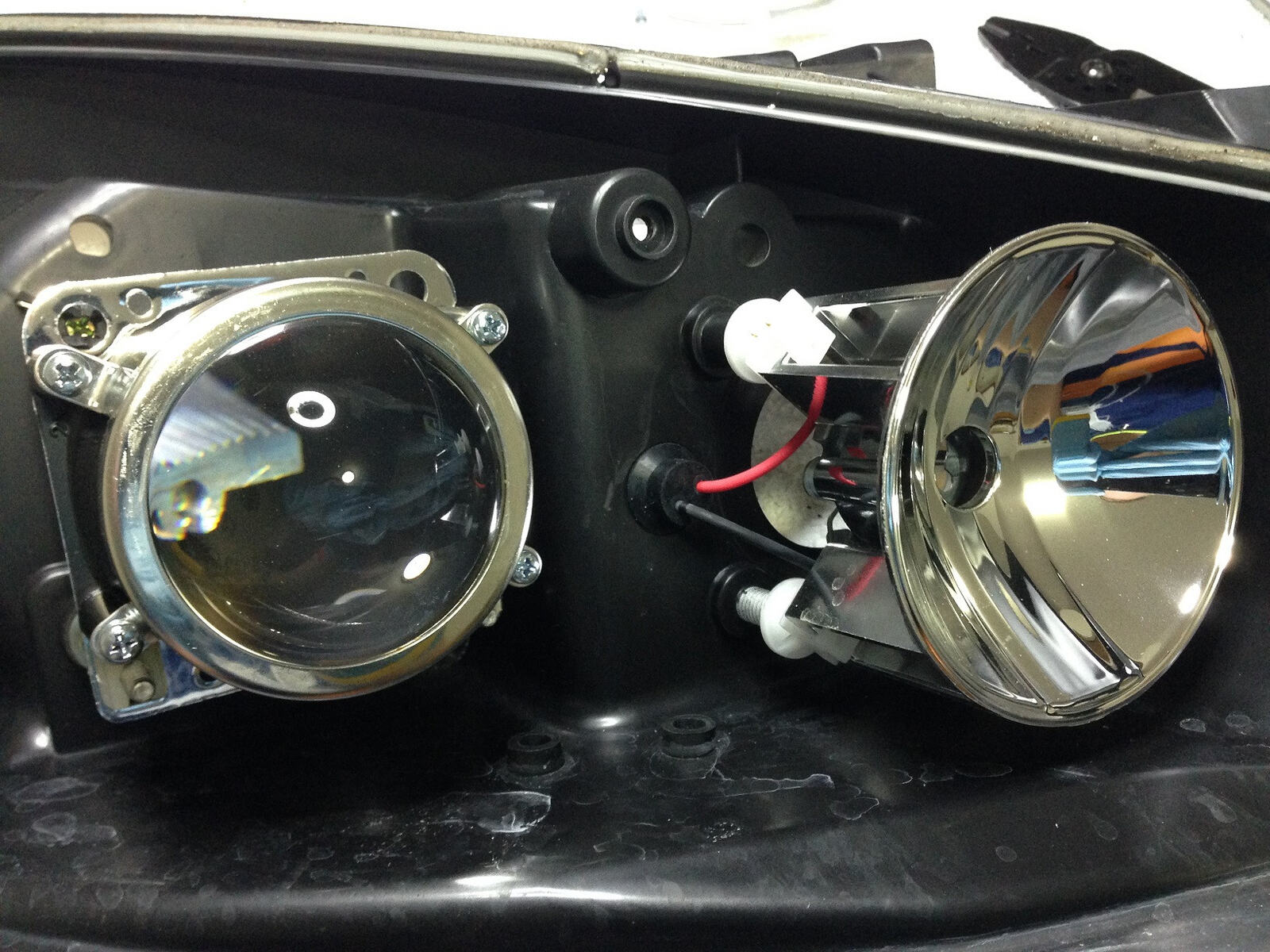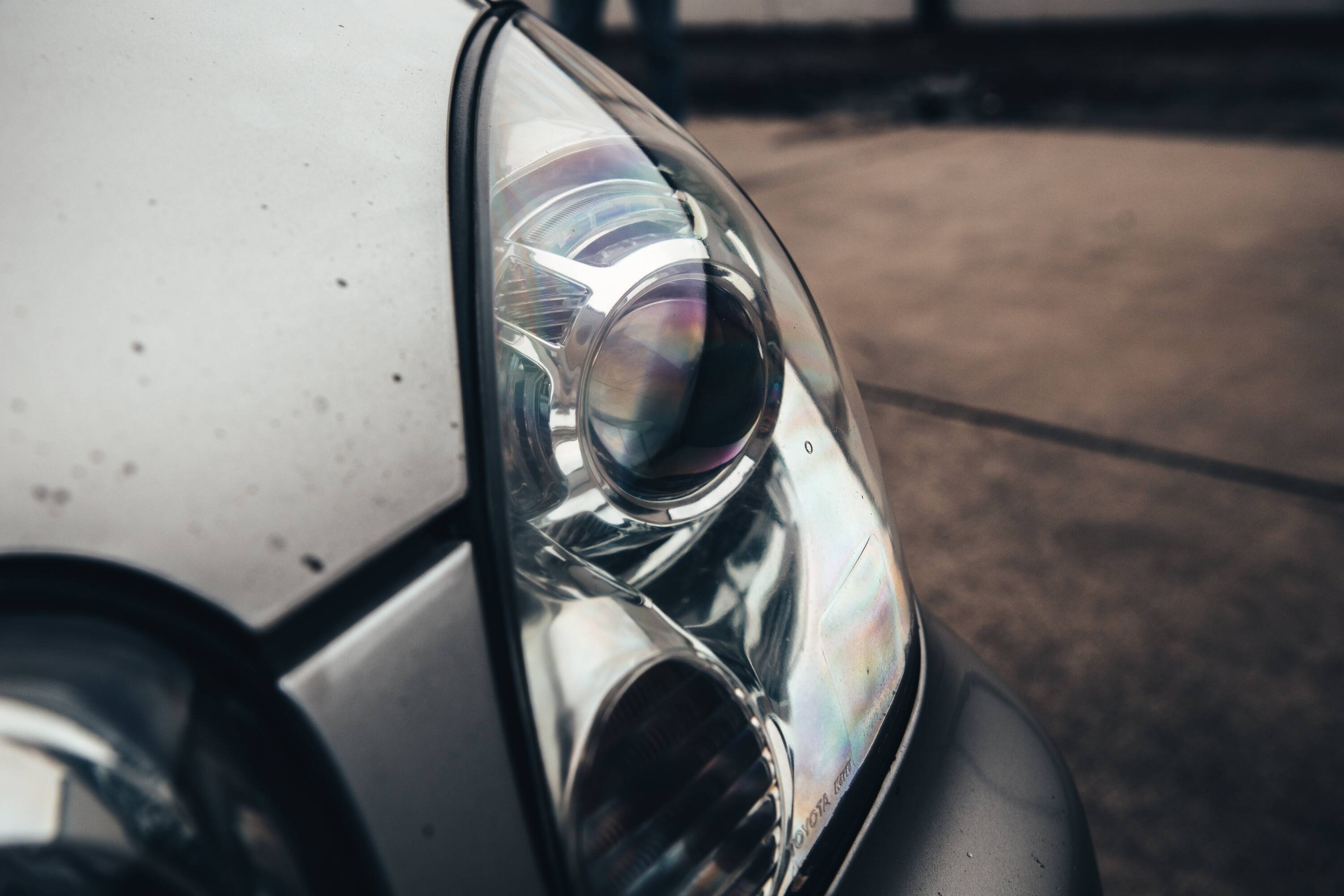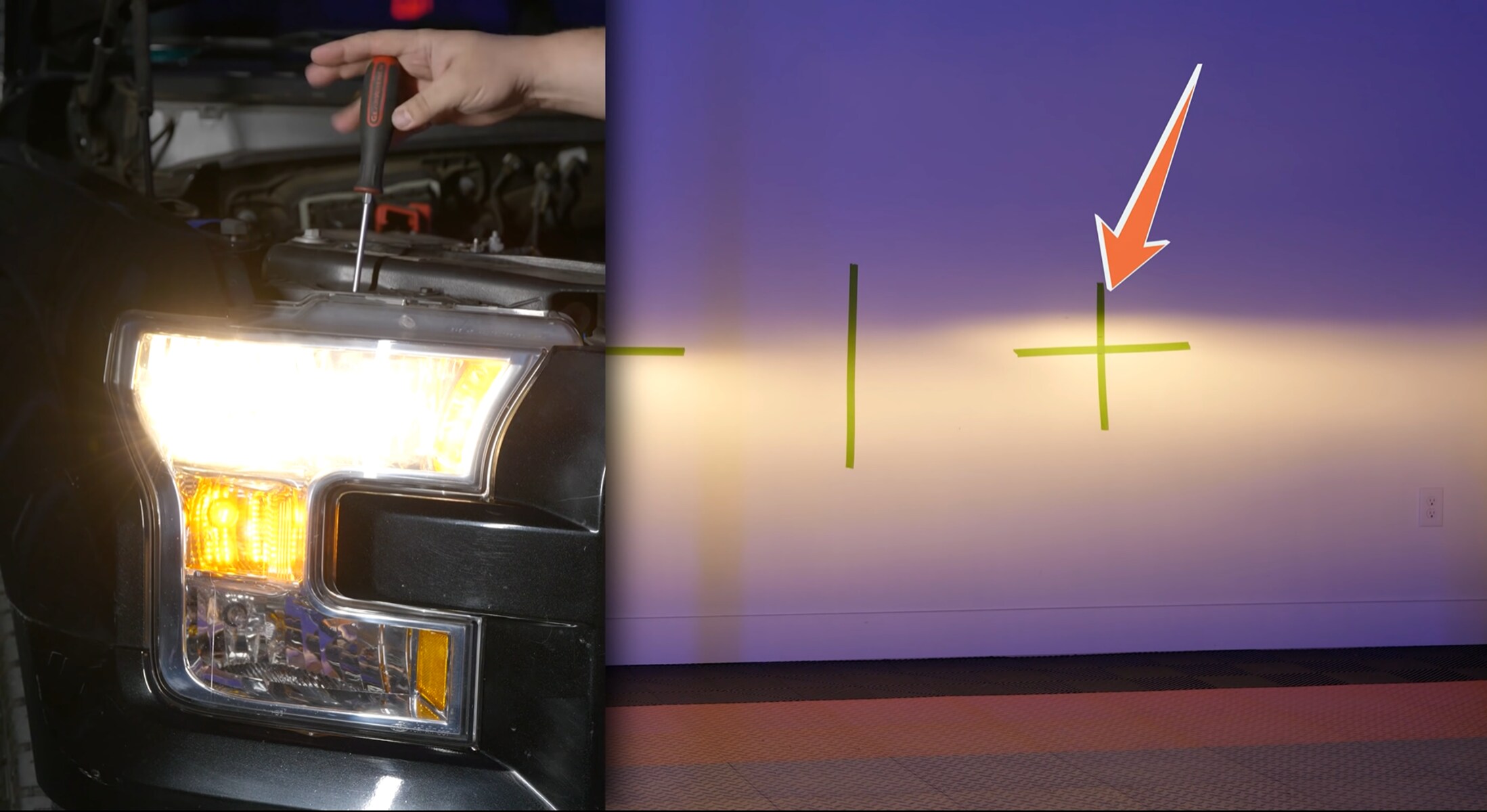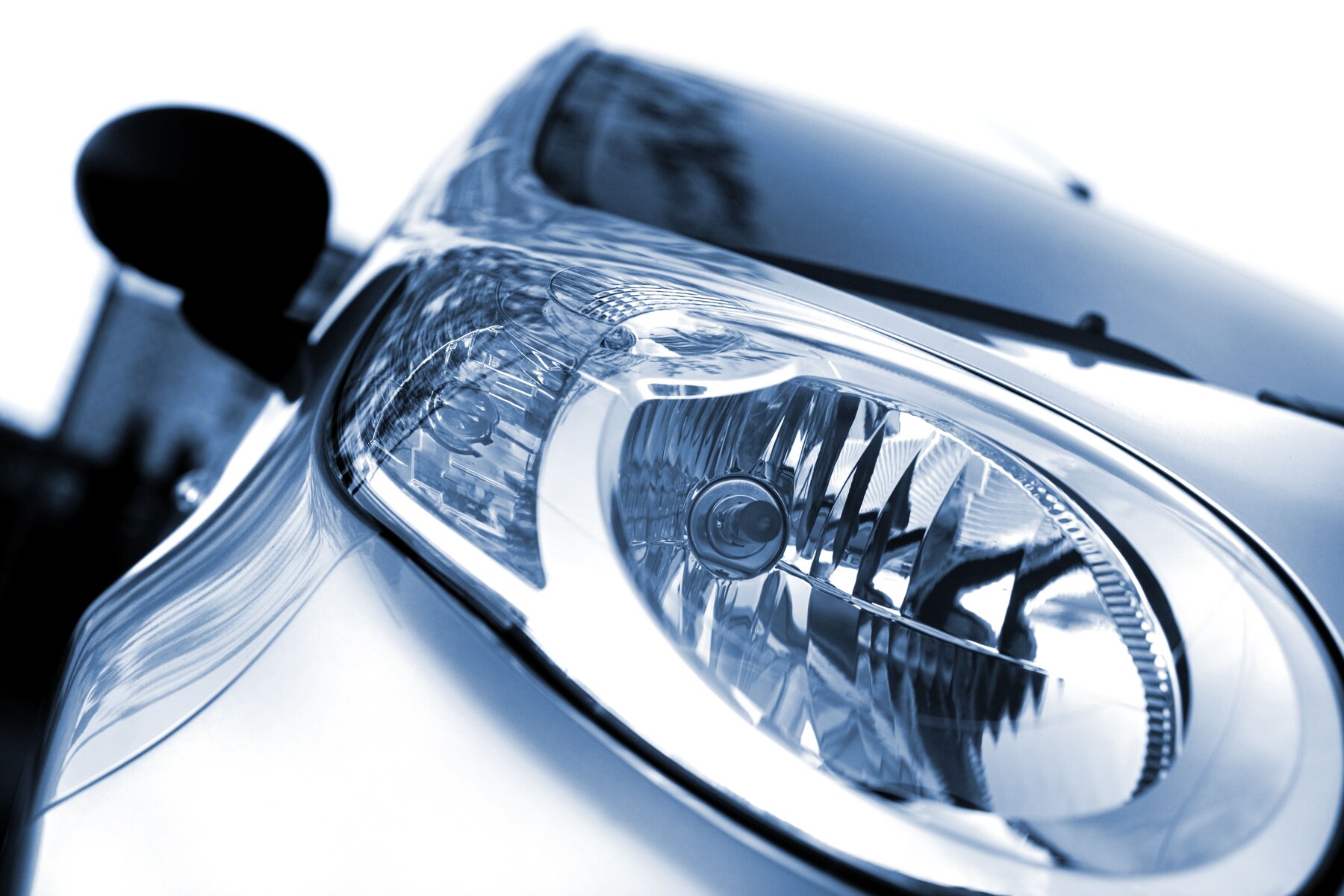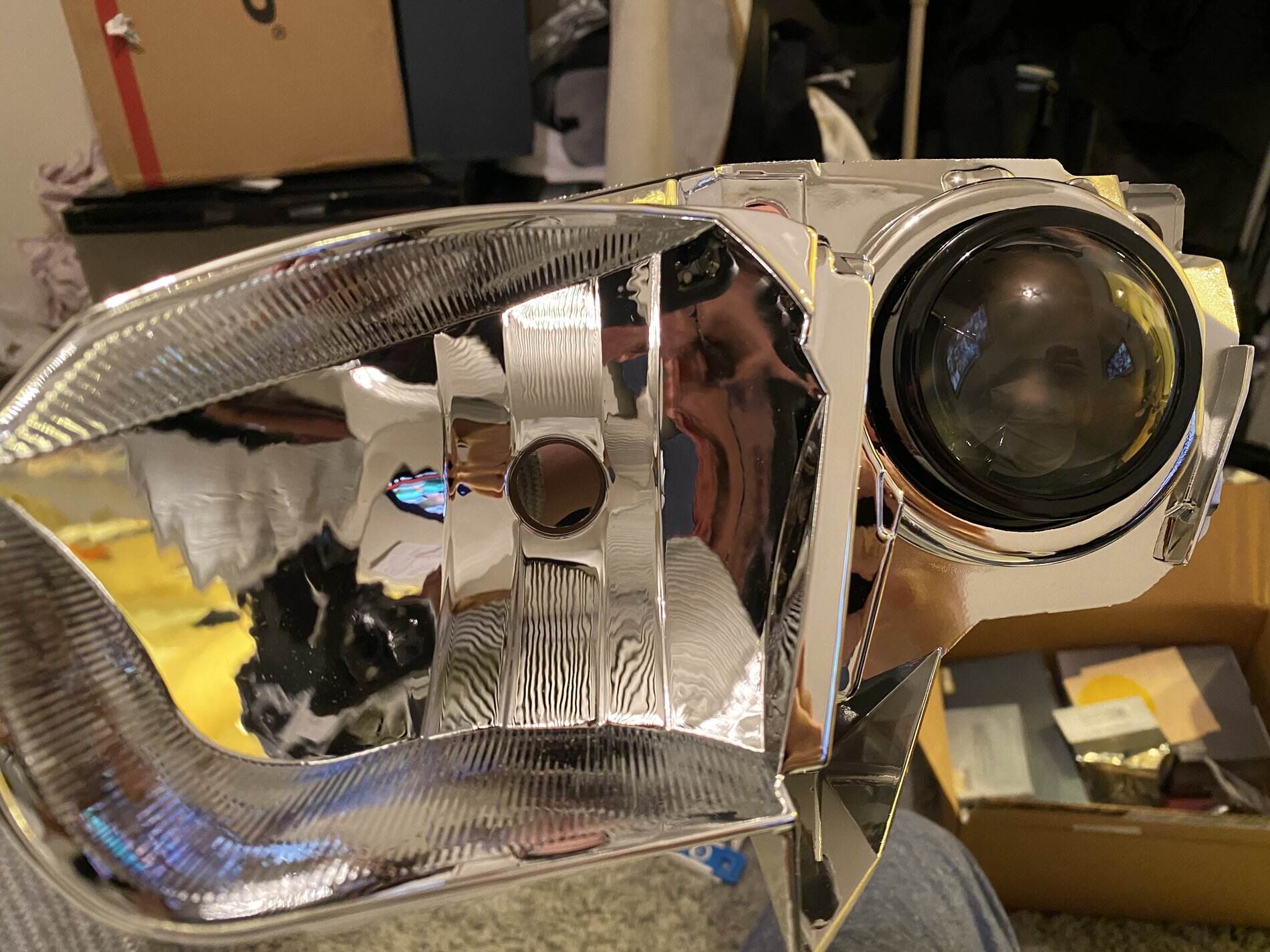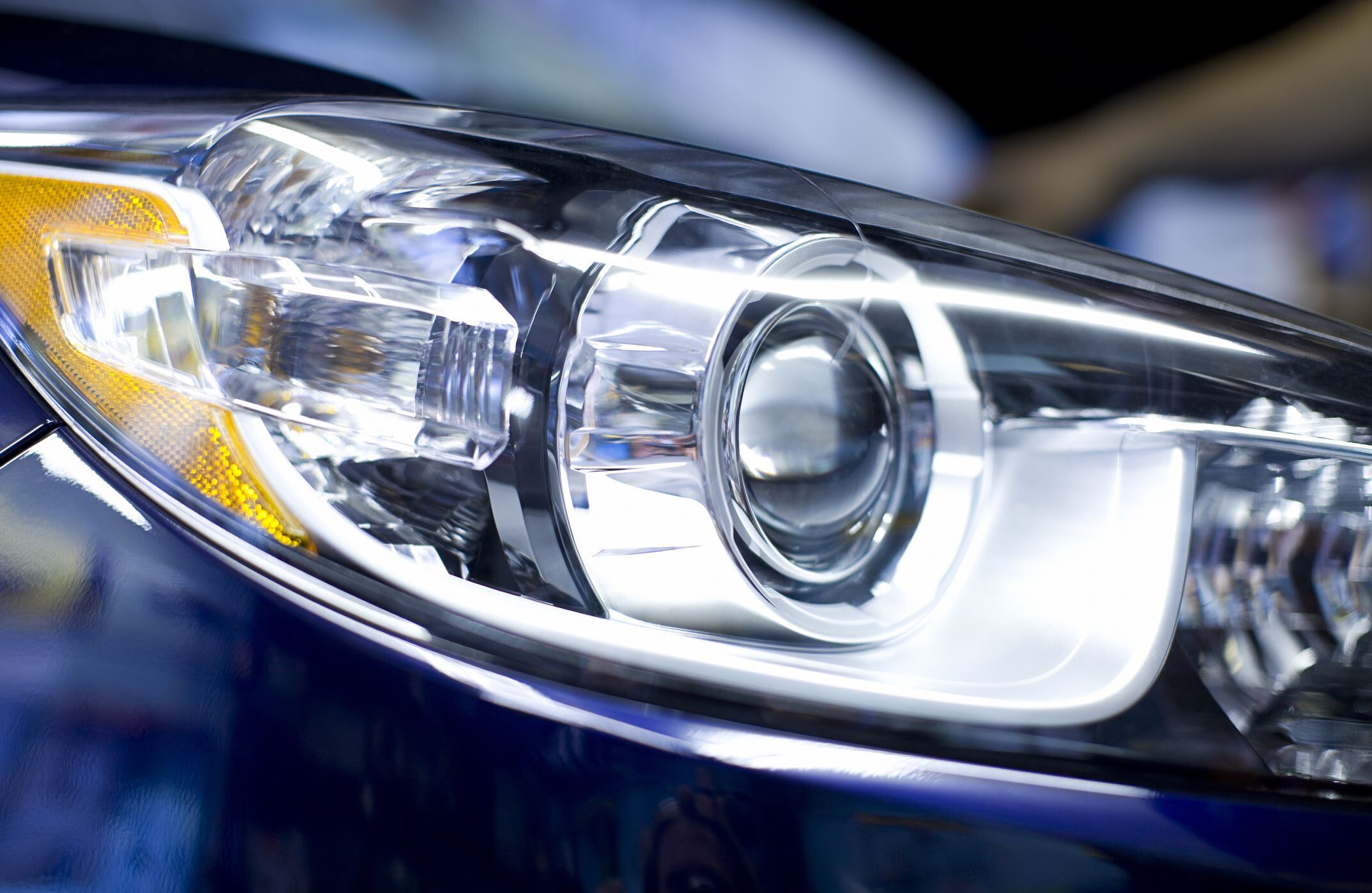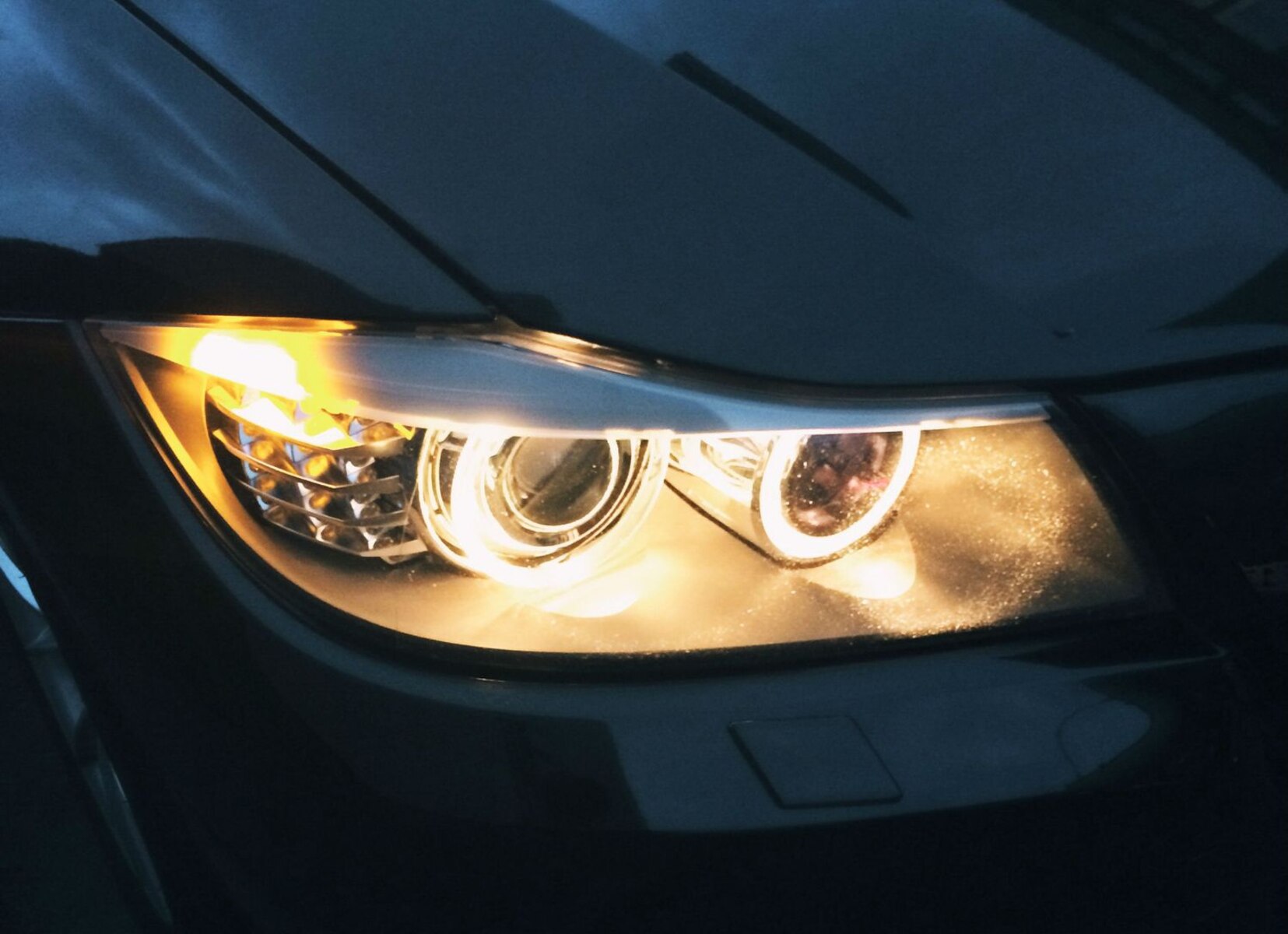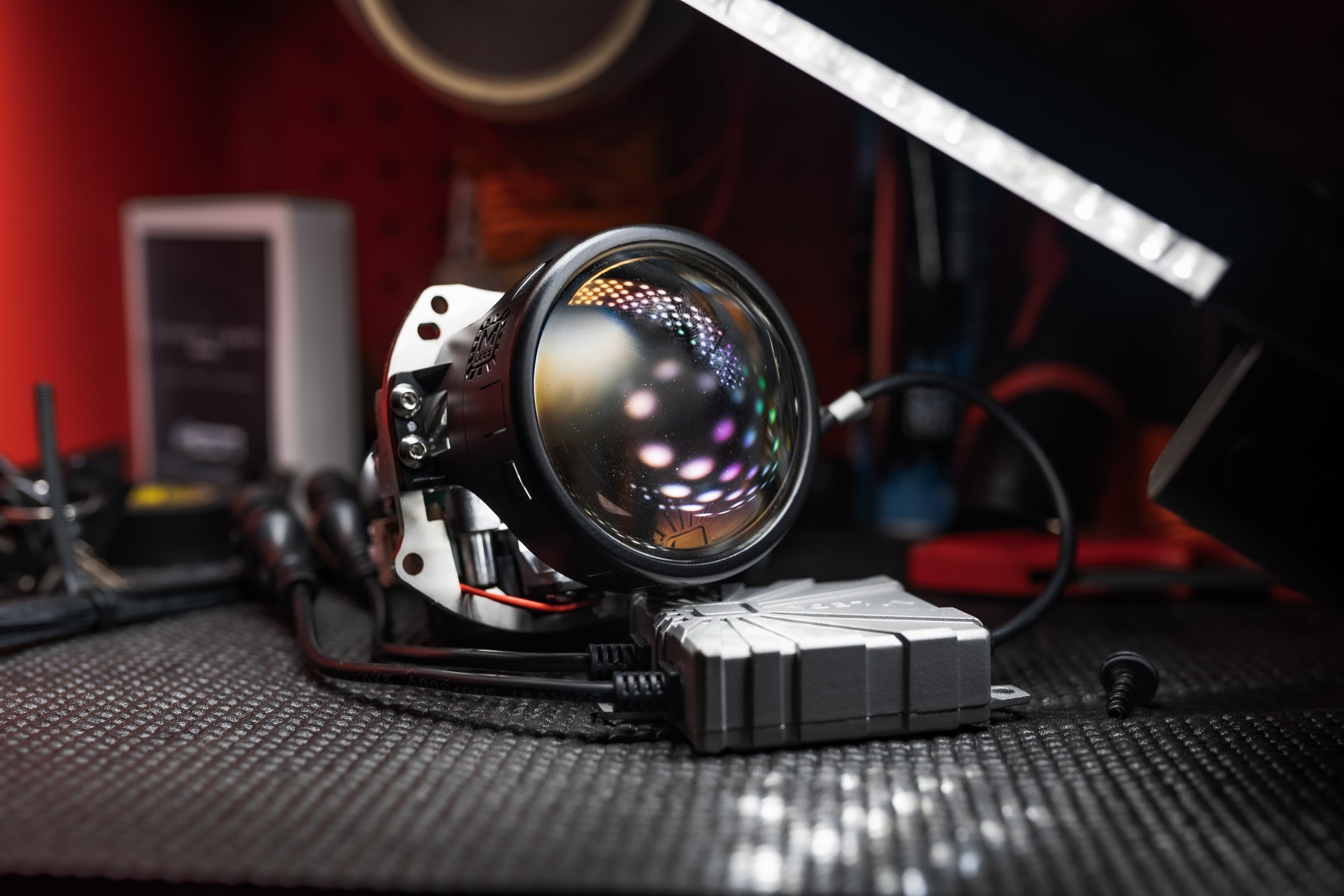Introduction
When it comes to headlights for your vehicle, you have probably heard the terms “projector headlights” and “standard headlights.” But what exactly do these terms mean, and how do they differ from each other? In this article, we will explore the world of projector headlights and standard headlights, examining their functionality, benefits, drawbacks, and ultimately helping you determine which option may be better for your needs.
Headlights play a crucial role in providing visibility and safety while driving, especially during low-light or adverse weather conditions. They illuminate the road ahead, allowing you to see and be seen by other drivers. However, not all headlights are created equal. Projector headlights and standard headlights provide different lighting mechanisms and have distinct characteristics that can greatly impact their performance.
Whether you are replacing your existing headlights or looking to upgrade to a more efficient lighting system, understanding the difference between projector and standard headlights is essential. By the end of this article, you will have a better understanding of these two options and be able to make an informed decision about which type of headlights is best suited for your vehicle.
What Are Projector Headlights?
Projector headlights are a type of automotive lighting technology that have gained popularity in recent years. Unlike standard headlights, which use a reflector system to distribute the light, projector headlights employ a different mechanism to produce a focused and controlled beam.
The basic design of a projector headlight includes a bulb, a lens, and a reflector. The bulb, typically a halogen, HID (High-Intensity Discharge), or LED (Light-Emitting Diode), acts as the light source. The light emitted from the bulb is directed towards a curved lens, which serves to focus and amplify the beam. Behind the lens, there is a small metal shroud, known as a “projector,” which helps to further control and shape the beam pattern.
The key feature of projector headlights is their ability to produce a sharp and well-defined cutoff line. This cutoff line separates the illuminated area from the areas in shadow, preventing the light from blinding oncoming drivers. This unique characteristic greatly improves visibility for both the driver and other vehicles on the road, reducing the risk of accidents due to glare.
Moreover, projector headlights tend to have a more concentrated and intense beam compared to standard headlights. They are designed to provide a brighter and more focused illumination, which can extend the range of visibility. This makes them ideal for driving in poorly lit areas or during nighttime conditions.
Additionally, projector headlights often feature a stylish and modern appearance. With their sleek and futuristic design, they can enhance the overall aesthetics of your vehicle. Many vehicle manufacturers now include projector headlights as part of their higher-end models to offer a more premium and sophisticated look.
How Do Projector Headlights Work?
Projector headlights utilize a complex yet efficient mechanism to produce a controlled and focused beam of light. Understanding the basic working principles will give you a deeper insight into why these headlights are preferred by many drivers.
As mentioned earlier, projector headlights consist of a bulb, a lens, and a reflector. The bulb is the source of light and is positioned in the center of the headlight assembly. It can be a halogen bulb, HID bulb, or an LED module, depending on the specific model and design.
Behind the bulb, there is a curved lens that plays a crucial role in shaping the light beam. The lens helps to focus the light emitted by the bulb and directs it forward in a controlled manner. It allows for better precision in beam distribution, resulting in a sharper cutoff line and reduced scattered light.
At the heart of projector headlights lies the projector itself, which is situated behind the lens. The projector is a small metal housing that contains a concave mirror, a lens, and a shade. When the light passes through the lens, it is reflected by the concave mirror, which helps to shape and control the beam pattern.
The shade inside the projector creates the distinct cutoff line that separates the illuminated and non-illuminated areas on the road. This cutoff line acts as a boundary, preventing the light from being scattered and causing glare to oncoming drivers.
The combination of the lens, reflector, and shade within the projector headlight assembly helps in directing the light forward with precision. The result is a focused and powerful beam that enhances visibility for the driver and improves safety on the road.
It is worth noting that projector headlights often come with additional features such as adaptive lighting systems. These systems can automatically adjust the beam angle and intensity based on the vehicle speed, steering input, and surrounding conditions. This adaptive functionality ensures optimal lighting in various driving situations, further enhancing safety and visibility.
Benefits of Projector Headlights
Projector headlights offer several advantages over standard headlights, making them a popular choice among car enthusiasts and safety-conscious drivers. Below are some key benefits of using projector headlights:
- Improved Visibility: Projector headlights provide a focused and controlled beam of light, which significantly improves visibility on the road. The sharp cutoff line prevents glare and enhances visibility for both the driver and oncoming vehicles.
- Brighter and More Intense Illumination: Compared to standard headlights, projector headlights often produce a brighter and more intense illumination. This allows for better visibility in dark or poorly lit areas, making night driving safer and more comfortable.
- Enhanced Safety: The superior lighting capabilities of projector headlights contribute to increased safety on the road. Clear visibility helps drivers detect potential hazards earlier and react accordingly, reducing the risk of accidents and improving overall road safety.
- Stylish Appearance: Projector headlights are known for their sleek and modern design, which can add a touch of sophistication to your vehicle’s front end. They often come in various shapes and styles, allowing you to customize the look of your car and give it a unique appeal.
- Longer Lifespan: Projector headlights, especially those equipped with LED technology, tend to have a longer lifespan compared to traditional halogen headlights. This means less frequent bulb replacements and maintenance, saving you time and money in the long run.
In summary, projector headlights offer improved visibility, enhanced safety, and a stylish appearance. Their advanced lighting technology and precise beam control make them a popular choice among drivers looking for a reliable and efficient lighting solution for their vehicles.
Drawbacks of Projector Headlights
While projector headlights come with numerous benefits, it’s important to consider their drawbacks as well before making a decision. Here are a few potential drawbacks of using projector headlights:
- Higher Cost: Projector headlights, especially those equipped with advanced technologies like HID or LED, tend to be more expensive compared to standard headlights. This higher cost can be a deterrent for some budget-conscious car owners.
- Complex Installation: Installing projector headlights may require some technical knowledge or professional assistance. Their specific design and wiring may make it more challenging and time-consuming to replace or upgrade them compared to standard headlights.
- Limited Availability: While projector headlights have gained popularity, they might not be readily available for all car models. This limited availability can make it difficult to find a suitable projector headlight replacement for certain vehicles.
- Potential Glare: While projector headlights are designed to minimize glare, poorly aimed or improperly installed units can still cause glare for oncoming drivers. Careful adjustment and alignment are crucial to prevent any potential issues.
- Non-Uniform Beam Distribution: Some projector headlights may have beam distribution that is less uniform compared to standard headlights. This can result in areas of the road being unevenly lit, leading to potential blind spots for the driver.
It’s worth noting that while these drawbacks exist, they can be mitigated or managed with proper installation, maintenance, and adjustment of the projector headlights. Overall, it’s important to weigh the benefits against the drawbacks and consider your specific requirements and preferences before deciding whether projector headlights are the right choice for your vehicle.
What Are Standard Headlights?
Standard headlights, also known as reflector headlights, are the conventional type of headlights found in most vehicles. They have been in use for many decades and are the default option for many entry-level and mid-range car models. Standard headlights operate on a simple yet effective mechanism.
The design of standard headlights consists of a bulb, a reflector, and a clear lens. The bulb, typically a halogen bulb, serves as the light source and is positioned at the center of the headlight assembly. When the bulb is illuminated, the light radiates in all directions.
The reflector, located behind the bulb, plays a crucial role in directing and distributing the light. It is a parabolic-shaped surface coated with a reflective material, such as chrome or aluminum. The reflector reflects the light emitted by the bulb forward through the clear lens.
The clear lens of standard headlights has a smooth surface that allows the light to pass through without any obstruction. It provides protection to the bulb and the reflector and helps to maintain a focused beam pattern.
Standard headlights produce a wide and diffuse beam of light that illuminates a broader area in front of the vehicle. This wider dispersion can be useful in illuminating the road and the surroundings without causing sharp cutoff lines or intense glares for oncoming drivers.
It’s important to note that standard headlights may be equipped with different types of bulbs, such as halogen, HID, or LED, depending on the specific vehicle model and manufacturer. However, the fundamental design and concept of using a reflector to distribute the light remain the same.
While standard headlights are a tried-and-tested lighting option, they may not offer the same level of focused illumination and precise beam control as projector headlights. However, they are still widely used due to their simplicity, reliability, and cost-effectiveness.
How Do Standard Headlights Work?
Standard headlights, also known as reflector headlights, operate on a simple yet effective mechanism to provide illumination on the road. Understanding the basic working principles can give you insights into how these headlights function.
The key components of standard headlights are the bulb, reflector, and lens. The bulb, typically a halogen bulb, is positioned in the center of the headlight assembly. When the bulb is activated, it emits light in all directions.
Behind the bulb, there is a reflective surface known as the reflector. The reflector is usually a parabolic-shaped structure coated with a reflective material, such as chrome or aluminum. Its purpose is to redirect and distribute the light emitted by the bulb in a forward direction.
As the light hits the reflective surface of the reflector, it bounces off and is directed toward the lens. The lens, which is made of clear material, allows the light to pass through without hindrance while also protecting the bulb and the reflector.
Unlike projector headlights, standard headlights do not have a separate projector housing to control and shape the beam pattern. Instead, the reflector helps to achieve a wide and diffuse beam of light, spreading it across a larger area ahead of the vehicle.
The spread of the light from standard headlights is more scattered compared to the focused beam produced by projector headlights. This wider dispersion is useful in providing visibility of the road and surroundings, illuminating a broader area overall.
It’s important to note that while standard headlights serve the purpose of illuminating the road, they may not offer the same level of precision and beam control as projector headlights. However, they are a reliable and cost-effective lighting option found in many entry-level and mid-range vehicles.
In summary, standard headlights work by utilizing a bulb, reflector, and lens to provide illumination on the road. The reflector helps to redirect the light emitted by the bulb, spreading it out in a wide pattern. While they may not offer the same focused illumination as projector headlights, they remain a popular and practical choice for many drivers.
Differences Between Projector and Standard Headlights
Projector headlights and standard headlights differ in terms of their design, functionality, and beam patterns. Understanding the differences between these two types of headlights can help you make an informed decision when it comes to choosing the right lighting option for your vehicle.
Design: Projector headlights have a more complex design compared to standard headlights. They feature a bulb, lens, and projector assembly, which work together to produce a focused and controlled beam of light. On the other hand, standard headlights consist of a bulb, reflector, and lens, with the reflector reflecting the light in a wide pattern.
Beam Pattern: One of the key differences between projector and standard headlights is the beam pattern they produce. Projector headlights offer a sharp cutoff line, separating the illuminated area from the areas in shadow. This cutoff line helps to prevent glare and provides a more focused illumination. Standard headlights, on the other hand, produce a wider and more scattered beam, illuminating a broader area.
Visibility: Projector headlights generally provide better visibility compared to standard headlights. The focused beam and sharp cutoff line of projector headlights help to enhance visibility for both the driver and oncoming vehicles, reducing the risk of glare and improving road safety. Standard headlights, while providing a wider spread of light, may not have the same level of focused visibility as projector headlights.
Appearance: Projector headlights often have a sleek and modern appearance, adding a stylish touch to a vehicle’s front end. With their distinctive lens and projector housing, they offer a more sophisticated and high-end look. Standard headlights have a more traditional design and may not have the same level of aesthetic appeal.
Cost: Projector headlights usually come at a higher cost compared to standard headlights. The advanced technology and precise beam control of projector headlights contribute to their higher price point. Standard headlights, being more common and less technologically advanced, are generally more affordable.
Installation: Installing projector headlights may require more technical expertise or professional assistance compared to standard headlights. The complex design and alignment of projector headlights can make the installation process more challenging. Standard headlights, being simpler in design, are easier to install and replace.
It’s important to consider these differences and evaluate your specific needs and preferences when choosing between projector and standard headlights. While projector headlights may offer superior visibility and a more stylish appearance, standard headlights are cost-effective and provide a broader spread of light. Ultimately, the choice will depend on factors such as budget, style preferences, and the desired level of visibility and beam control.
Which Is Better: Projector or Standard Headlights?
The question of whether projector headlights or standard headlights are better ultimately depends on your specific needs and preferences. Each type of headlight has its own advantages and disadvantages, and the decision boils down to what is most important to you.
If you prioritize visibility and focused illumination, then projector headlights may be the better option for you. Their ability to produce a sharp cutoff line helps to prevent glare for oncoming drivers, while providing a brighter and more concentrated beam of light. Projector headlights are also often favored for their sleek and modern appearance, adding a stylish touch to the front end of a vehicle.
On the other hand, if you value a wider spread of light and cost-effectiveness, standard headlights may be the more suitable choice. They may not have the same level of beam control as projector headlights, but their wide and scattered beam pattern helps to illuminate a broader area ahead of the vehicle. Standard headlights are also commonly found in many vehicles and are generally more affordable, making them a practical option for budget-conscious car owners.
It’s important to consider the specific driving conditions and requirements that you frequently encounter. If you frequently drive in poorly lit areas or at night, where visibility is crucial, projector headlights with their focused beam pattern may be the better choice. However, if you primarily drive in well-lit urban areas, standard headlights may be sufficient for your needs.
Additionally, it’s worth considering any local laws and regulations regarding headlight modifications. Some jurisdictions may have specific requirements for headlight types and beam patterns, which could influence your decision.
To make an informed decision, evaluate the pros and cons of each type of headlight, consider your driving habits and environment, and determine which factors are most important to you. It may also be beneficial to consult with a professional or seek advice from other drivers who have experience with both types of headlights.
Ultimately, the choice between projector and standard headlights is subjective and depends on your specific preferences, needs, and budget. Evaluate your options carefully and choose the headlights that align with your priorities to ensure optimal visibility and safety during your driving experiences.
Conclusion
Choosing between projector headlights and standard headlights is a decision that depends on a variety of factors. Both types of headlights have their own set of advantages and disadvantages, and the right choice ultimately depends on your individual needs and preferences.
If you prioritize focused and controlled illumination, along with a sleek and modern appearance, projector headlights are a great option. They offer improved visibility, a sharp cutoff line to prevent glare, and a brighter and more intense beam of light. However, they may come at a higher cost and require more complex installation.
On the other hand, standard headlights provide a wider and more scattered beam of light that illuminates a broader area in front of your vehicle. They are generally more affordable and easier to install, making them a practical choice for those on a budget or looking for a simple and reliable lighting solution.
Ultimately, the decision boils down to your specific driving habits, environments, and personal preferences. Consider factors such as the level of visibility you need, the aesthetic appeal you desire, and your budget constraints. It may also be helpful to consult with professionals or seek advice from experienced drivers to gain insights on the best choice for your specific vehicle and driving conditions.
Regardless of the choice you make, it’s important to prioritize safety on the road. Ensure that your headlights are properly aligned, in good working condition, and meet any legal requirements in your jurisdiction. Regular maintenance and inspections of your headlights will ensure optimal performance and visibility.
In conclusion, both projector headlights and standard headlights have their own unique features and advantages. Carefully evaluate your needs, consider the pros and cons of each option, and make an informed decision to ensure that you have the best possible lighting solution for your vehicle.







